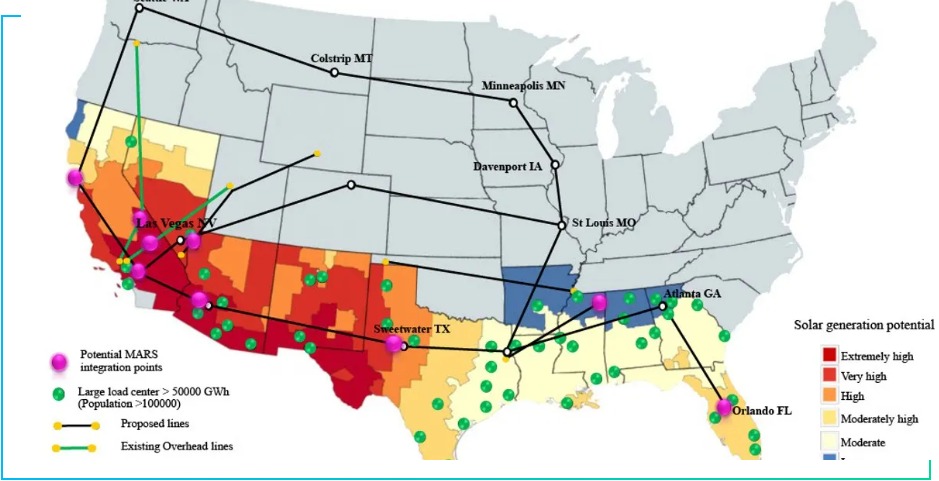World News24.01.2023
This solar + storage project could be a US grid game changer

QAZAQ GREEN. A team at the US Department of Energy’s Oak Ridge National Laboratory has developed a utility-scale solar and storage project that can provide power to both AC and DC high-voltage lines, and thus shore up grid stability – here’s how it works.
According to Electrek, most of the US power grid uses alternating current, or AC, which constantly switches the direction of electron flow. But solar and battery storage uses direct current, or DC, that flows in a single direction.
The US power grid includes a smaller number of high-voltage DC lines that are more efficient at delivering bulk power over long distances or to remote regions.
Converting current between DC and AC requires specialized power electronics. So researchers at Oak Ridge National Laboratory have developed a design and control system and architecture for a solar and storage plant that can provide power to both AC and DC high-voltage lines. As a result, renewable power can be more easily and reliably transmitted.
The project is called MARS, or “multi-port autonomous reconfigurable solar power plant.” It’s an all-in-one package that includes power electronics, electrical architecture, and cybersecurity software. And because it’s plug-and-play, it’s easier and cheaper for utilities to get it online.
Case simulations in hardware that were based on two California sites revealed that MARS achieved up to 50% reduction in power loss, a 16% improvement in stabilizing AC voltage frequency, and 100% detection of cyber intrusions.
MARS can also reconfigure itself based on available energy. For example, when the solar panels weren’t generating electricity at night, MARS could continue to connect the AC and DC transmission systems and use stored battery power to supplement its operation.
The researchers found that MARS reduced electrical costs by up to 40%, as they developed an algorithm to fine-tune plant size and energy storage to maximize annual revenue.
MARS also includes an innovative type of inverter that can maintain grid stability and jumpstart the grid after a disturbance.
Team lead Suman Debnath team explained:
You do not want the power grid to have significant losses of power when disturbances happen.
Traditional renewable plants may disconnect from the grid or stop sending power, but we did not see that happen with MARS. It could cope better with failures in the external grid and continue to operate, supporting the broader power system.
Oak Ridge National Laboratory is working with such industry partners as Southern California Edison, Opal-RT, Hitachi Energy, and the Georgia Institute of Technology. The Oak Ridge team and its partners are working together to roll out an initial field demonstration of either MARS components that support grid stability, or a scaled-down version of the full design.
‘Wings’ on poles: Bill Gates-backed breakthrough wind turbine facility breaks ground
Perovskite tandem solar cell achieves new efficiency record
Kazakhstan and China endorse draft SCO joint statement on sustainable energy development
Innovative research on organic solar cells for space applications
Kazakhstan and Uzbekistan drive green energy progress in Central Asia
KazMunayGas launches pilot green hydrogen project in Atyrau
How private homeowners in Kazakhstan can make money from solar panels
14 countries are investing in Kazakhstan's renewable energy sector through auctions
How green hydrogen could transform Kazakhstan’s energy sector
IKEA offers ready-to-use solar power systems for balconies
Adani commissions India’s first off-grid green hydrogen pilot plant
Tajikistan unveils green energy roadmap at international conference in Dushanbe
Hydropower projects selected through KOREM Auction in Kazakhstan
EU reaches political deal to simplify CBAM
New research could unlock the potential of bladeless wind turbines
Uzbekistan to launch 16 renewable energy facilities by the end of 2025
Kazakhstan holds auction for 50 MW of small hydropower projects
Kazakhstan and EBRD strengthen partnership on decarbonisation and renewable energy
$200 million solar energy complex breaks ground in Egypt
Official report revealed causes of Spain's blackout











